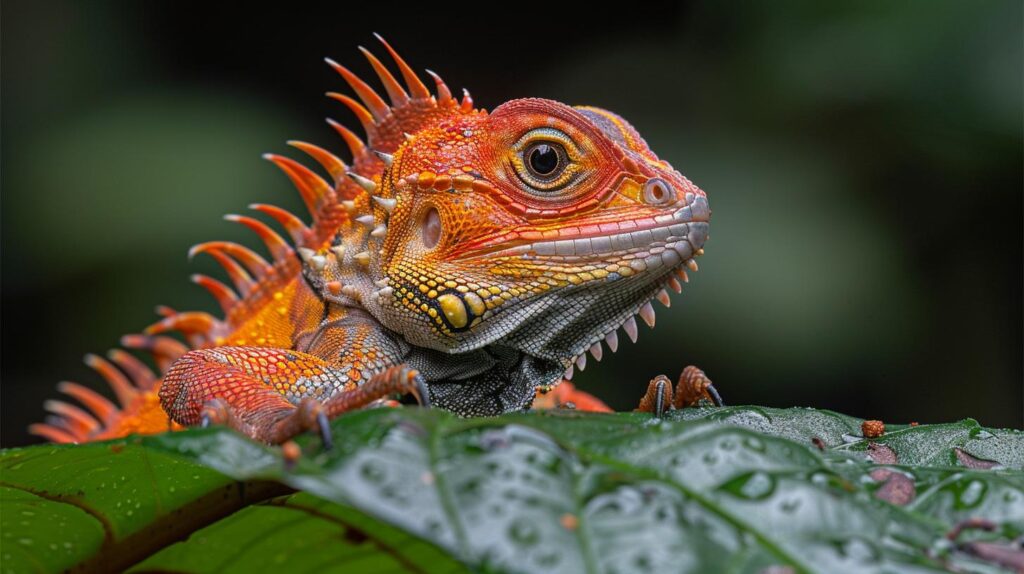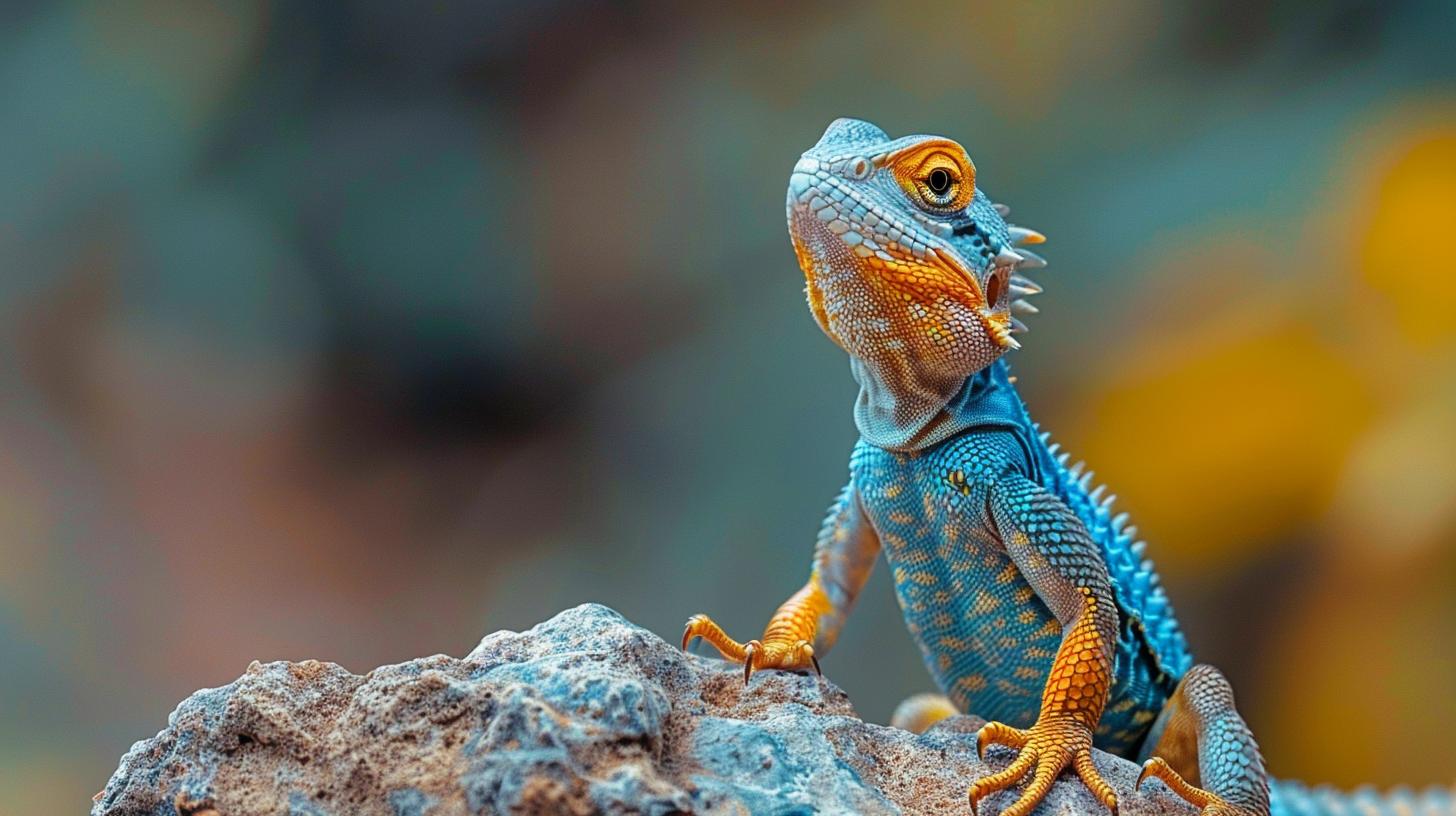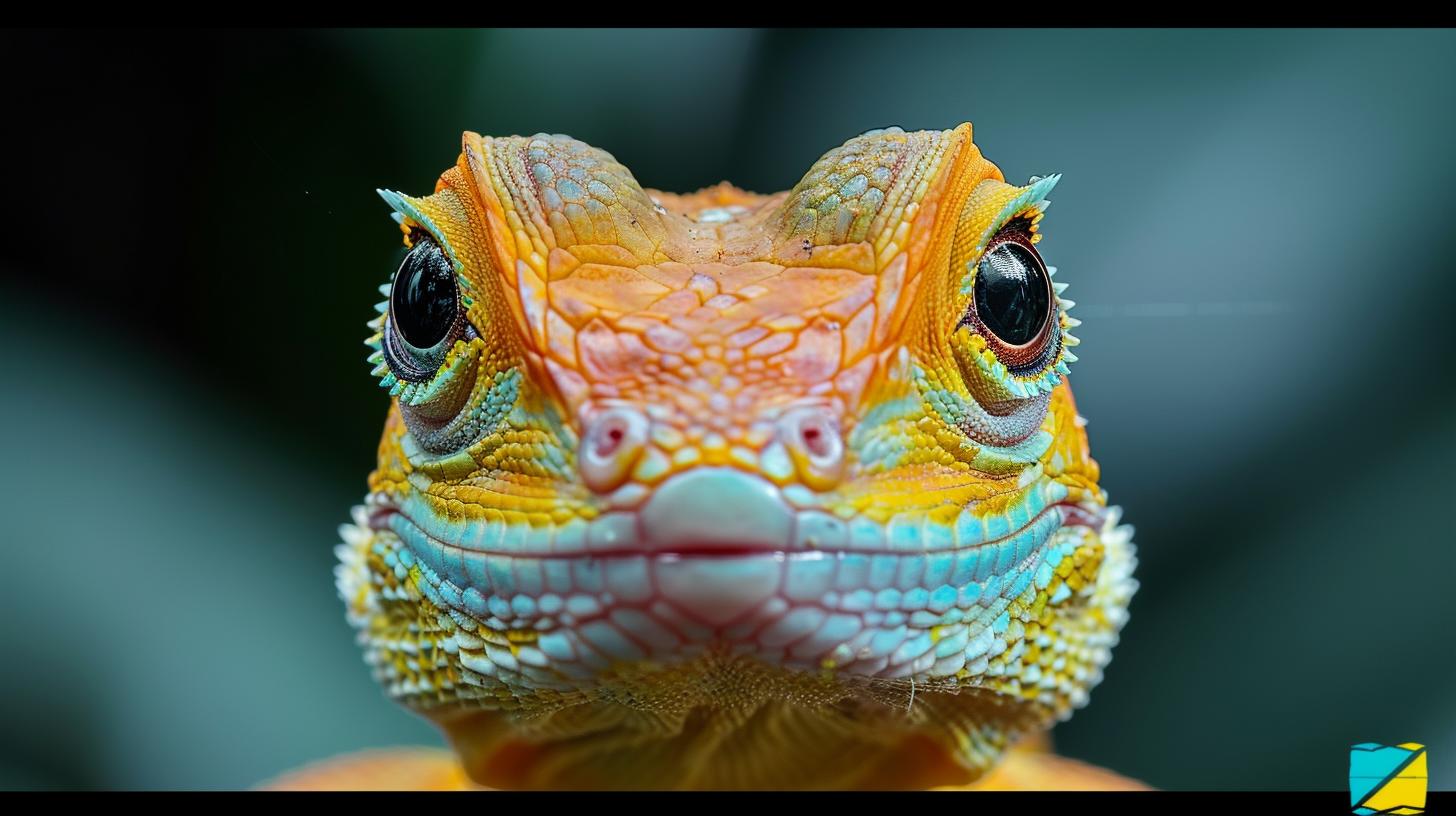5 Tips to Combat Lizard Skin Infections

Understanding Lizard Skin Infections
To effectively combat lizard skin infections, pet owners must first delve into the what, why, and how of these common health issues. Lizards, with their distinct biological features and behaviors, are susceptible to a variety of skin infections that can affect their health and wellbeing significantly. Understanding the basics of these infections not only aids in early detection but also forms the foundation for effective prevention and treatment strategies.
Lizard skin infections typically stem from bacterial, fungal, or parasitic causes. These can range from mild irritations to severe conditions that require immediate medical attention. Key signs indicating a potential skin infection include unusual spots, discoloration, blisters, and apparent shedding issues. Observing these symptoms early on can make a substantial difference in managing the infection effectively.
However, identifying the root cause is just as crucial. Poor habitat conditions, improper nutrition, and stress can all contribute to the vulnerability of lizards to skin infections. By understanding these factors and recognizing the early signs of trouble, owners can take proactive measures to ensure their lizard remains healthy and thriving. This knowledge serves as an essential tool in your repertoire for nurturing a safe and enriching environment for your scaly companion.
The Importance of a Clean Habitat
Maintaining a clean habitat is pivotal in the fight to combat lizard skin infections. A pristine environment not only discourages the growth and spread of pathogens but also supports your lizard's overall health and well-being.
The process begins with understanding that bacteria, fungi, and other harmful microorganisms can thrive in dirty enclosures, transforming them into breeding grounds for diseases. To aid in this crucial aspect of reptile care, integrating regular cleaning routines and closely monitoring your pet's living conditions become non-negotiable tasks.
To ensure the effectiveness of your cleaning efforts, follow this straightforward step-by-step guide:
- Daily Tasks: Remove uneaten food, waste products, and shed skin. These materials can quickly harbor bacteria if left unattended.
- Weekly Deep Cleans: Set aside one day a week to conduct a thorough cleaning. This includes washing and disinfecting all surfaces, decorations, and substrate within the enclosure. Use reptile-safe disinfectants available from pet supply stores to avoid exposing your pet to harmful chemicals.
- Monthly Check-ups: Once a month, inspect all heating and lighting equipment, as malfunctions here can create stressors that weaken your lizard's immune system.
Aside from cleanliness inside the terrarium or tank, paying attention to room conditions where the habitat is located can further protect against infections. Ensure good air quality and maintain ambient temperatures within recommended ranges since extreme fluctuations can stress your lizard, making them more susceptible to illnesses.
Moreover, prevention strategies go hand-in-hand with maintaining hygiene standards. Integrating aspects such as balanced nutrition for immune support ensures that your lizard has the necessary defenses to fend off potential infections effectively. When combined with educational rigor on the importance of proper handling techniques and stress reduction methods covered in subsequent sections of this article series, these approaches build a comprehensive defense strategy against skin infections.
In adopting these measures within our care routines, we fortify our commitment to curating environments conducive not just for survival but for thriving lizards under our guardianship. As we proceed to explore balanced nutrition's role in supporting this mission in upcoming dialogues, carrying forward this holistic outlook on pet care will remain paramount.
Balanced Nutrition for Immune Support
A diet rich in essential nutrients plays a pivotal role in fortifying the immune system of lizards, thus helping to combat lizard skin infections more effectively. Providing your pet with a balanced meal plan tailored to its species not only satisfies its hunger but also arms it with the necessary vitamins and minerals to fend off various health issues, including skin infections.
The link between robust immunity and nutrition cannot be overstressed; it's about laying a solid foundation for your lizard's overall well-being.
To ensure your lizard receives the nutritional support needed for optimal health, consider incorporating the following into their diet:
- Variety of insects: Feeding lizards a diverse array of insects such as crickets, mealworms, and dubia roaches ensures they ingest a wide range of proteins and fats vital for immune function.
- Calcium and vitamin supplements: These are essential for preventing metabolic bone disease, which can make your reptile more susceptible to infections. Lightly dusting their food with calcium powder or providing vitamin drops can significantly enhance their nutrient intake.
- Fresh fruits and vegetables: Depending on your lizard's species, fresh produce can be an excellent source of vitamins A, C, and other antioxidants that support skin integrity and infection resistance.
Keeping in mind that different species have unique dietary requirements is crucial when planning meals. Consulting a veterinarian experienced in reptile care can provide guidance tailored to your pet's specific needs.
Proper nutrition is just one aspect of preventing skin maladies in lizards. It goes hand-in-hand with maintaining a clean habitat and minimizing stress through careful handling. Each factor contributes to creating an environment where lizards can thrive without the constant threat of skin infections nipping at their heels.
Moving forward from nutrition to thoughtful interaction with your lizard further underscores the importance of holistic care. Gently handling your pet reduces stress levels significantly, promoting a stronger immune response capable of warding off potential threats like bacterial or fungal skin infections before they escalate into more severe problems.
Proper Handling and Stress Reduction
Handling your lizard with care and ensuring its environment is free from stressors are crucial steps in maintaining its health, particularly when it comes to preventing skin infections. Lizards, being the delicate creatures they are, can easily become stressed or injured if not handled correctly, leading to potential breaks in their skin where infections can take hold.

Understanding the right techniques for safe handling and creating a serene habitat goes a long way in preserving the wellness of your scaly friend.
Stress reduction is equally important. A stressed lizard can suffer from a weakened immune system, making it more susceptible to diseases, including skin infections Combating stress involves understanding your lizard's needs for space, privacy, and optimal environmental conditions such as temperature and humidity. By tailoring your lizard's environment to meet these needs, you contribute significantly toward fostering a healthy immune system capable of fighting off pathogens.
Techniques for Safe Handling
Safe handling is paramount to avoid causing injury or undue stress. Always approach your lizard calmly and allow it to acknowledge you before attempting to pick it up.
Use gentle hands to support its body fully - never grab it by the tail since many species can exhibit tail autonomy as a defense mechanism which could be incredibly stressful and lead to injuries prone to infection. Remember that frequent handling might be overwhelming for some lizards; therefore, learn and respect your pet's tolerance levels.
Creating a Stress-Free Environment
To create a stress-free environment, pay attention to the layout of your lizard's enclosure. Include hiding spots where your lizard can retreat for solitude, ensuring those areas replicate natural hiding spaces as closely as possible. Regulate the day-night cycle within the enclosure adequately using proper lighting tools because lizards need this cycle for normal physiological functions. Minimizing noise levels around the habitat also contributes dramatically to reducing stress levels.
Managing ambient conditions within the enclosure cannot be overlooked when aiming to combat lizard skin infections An incorrect humidity level could lead not only to undue stress but also directly contribute to skin problems such as dysecdysis (difficult or abnormal shedding) which often precedes skin infections.
Consistently monitoring these environmental factors alongside gentle handling and providing hideouts helps keep stress at bay-fostering an immune system robust enough to combat potential health issues like lizard skin infections
Early Detection and Treatment
In the realm of pet care, early detection stands as a critical measure in preventing minor issues from ballooning into serious health problems. This tenet is particularly true when it comes to managing lizard skin infections, conditions known for their stealthy onset but potentially drastic impact on your reptile's health if left unchecked. Recognizing the early signs requires keen observation and an informed understanding of what constitutes normal versus abnormal skin appearance and behavior in lizards.
Recognizing Early Signs of Skin Infections
Lizard owners should be alert to various indicators that signify the onset of a skin infection. Changes such as unusual redness, swelling, sores, or the presence of pus are clear flags that should not be ignored. Moreover, behavioral changes including a loss of appetite or lethargy can also hint at discomfort possibly linked to an underlying skin issue.
Early detection hinges on regular and thorough examinations of your lizard's body and an awareness of its normal activity levels and behaviors. By staying vigilant, you bolster your chances to combat lizard skin infections effectively before they escalate.
Approaching a Vet: When It's Time to Seek Professional Help
While identifying potential problems early is crucial for every lizard owner, knowing when to seek professional veterinary care is equally important. If any signs of infection persist despite initial care efforts at home or if the condition appears severe from the onset - such as deep wounds, extensive loss of scales, or rapid deterioration in your lizard's general well-being - consulting with a veterinarian becomes imperative.
A qualified vet can diagnose the specific type of infection present through examinations and tests which could range from simple visual inspections to more complex procedures like biopsies or culture tests.
Professional treatment might involve prescribing antibiotics or antifungal medications depending on the nature of the infection. Additionally, vets can provide invaluable advice on further preventative measures and adjustments in care that will help safeguard your reptile companion against future outbreaks. This partnership between diligent pet ownership and expert veterinary intervention forms a robust defense line against lizard skin infections, ensuring these beloved creatures enjoy a healthy life under your guardianship.
By adhering to these guidelines for early detection and seeking timely professional treatment, you play an indispensable role in nurturing your lizard back to optimal health while preventing more serious conditions down the line. Remember, proactive management paired with expert advice is key to successfully navigating the challenges posed by possible skin infections in lizards.
Preventative Measures
In the quest to ensure the health and longevity of our scaly friends, implementing *preventative measures* against lizard skin infections is not just beneficial; it's essential. Building upon the foundational steps laid out in the preceding sections, we now turn our attention to proactive strategies that can be employed to shield our lizards from potential health threats.
By understanding and applying these preventative tactics, owners can create an environment that minimizes the risk of infection, promoting a more vibrant life for their reptile pets.
One of the cornerstones of preventing lizard skin infections involves regular habitat maintenance beyond just cleaning and disinfecting. This includes monitoring humidity levels, ensuring proper ventilation, and providing naturalistic elements that allow for normal shedding processes. Lizards that struggle with incomplete sheds due to inadequate environmental conditions are at a higher risk for developing skin infections. Another critical aspect is quarantining new or sick lizards to prevent the spread of pathogens to healthy individuals within a collection or household.

Further integrating into this preventive approach is the importance of routine health checks. Regularly examining your lizard for signs of distress, abnormal behavior, or physical abnormalities can catch issues before they develop into serious conditions. Early detection plays a vital role in effectively managing health issues, including skin infections.
| Preventive Measure | Description |
|---|---|
| Regular Habitat Maintenance | Maintaining cleanliness, appropriate humidity levels, and proper ventilation in the enclosure. |
| Environmental Enrichment | Incorporating naturalistic elements in the habitat to support normal behaviors like shedding. |
| Routine Health Checks | Periodic examination of physical and behavioral changes as early detection mechanisms. |
On top of these individual actions, engaging with a community of lizard enthusiasts and professionals can provide invaluable insights into effective prevention methods unique to specific species. Each type of lizard has its own set of requirements and vulnerabilities; therefore, tailored advice can significantly augment general guidelines on how to *combat lizard skin infections* effectively.
Through collective wisdom and shared experiences, lizard caretakers can further refine their approaches to care-taking-ensuring their pets not only survive but thrive free from the burden of avoidable ailments.
By seamlessly integrating these strategies into daily care routines alongside balanced nutrition and proper handling techniques discussed earlier, lizard owners empower themselves with a comprehensive defense mechanism against skin infections. However, it's imperative to remember that vigilance does not eliminate the need for professional veterinary intervention when necessary. The commitment towards preventative care enhances but does not replace the expertise provided by licensed veterinarians in diagnosing and treating advanced cases of skin infections among lizards.
In Summary
In wrapping up our exploration of effective ways to combat lizard skin infections, it's clear that prevention, early detection, and proper care form the cornerstone of keeping your reptilian companions healthy and vibrant. Each step, from understanding the basics of these infections to implementing stringent hygiene protocols in their habitats, plays a pivotal role in warding off diseases.
Balancing nutrition for immune support is not just about feeding your lizard; it's an investment in their long-term health and resilience against potential skin issues. Through diligent observation and gentle handling, pet owners can significantly reduce stress-induced vulnerabilities, further fortifying their pets' defenses against infections.
As we've journeyed through the various strategies to preempt and tackle these unwelcome conditions, the underlying theme has been one of proactive care and informed vigilance. Realizing when it's time to seek professional help goes beyond merely reacting to symptoms; it embodies a commitment to preserve the well-being of these fascinating creatures.
The measures outlined not only aim at treating existing infections but are a blueprint for nurturing robust lizards capable of resisting future health setbacks. Embracing these practices translates into providing a safe, healthy habitat that mirrors the natural environments their bodies are tailored to thrive in.
Securing the health of your lizard requires continuous learning and adaptation as new research emerges and our understanding deepens. We invite you to venture further into our rich compendium of articles tailored for reptile enthusiasts seeking to expand their knowledge and expertise.
Whether you're grappling with specific challenges or curious about enhancing your pet's life quality, our expertly curated content is designed to guide you every step of the way. Dive into our resources today and elevate your pet care journey beyond mere survival towards thriving ecosystems for your scaly friends.
Frequently Asked Questions
How Do You Treat Fungal Infection in Reptiles?
Treating fungal infections in reptiles involves isolating the affected animal to prevent spreading and consulting a veterinarian for an accurate diagnosis. The treatment often includes topical antifungal medications and, in some cases, oral antifungal drugs. It's essential to also improve the reptile's living conditions by optimizing temperature, humidity, and cleanliness to support recovery.
What Is the Skin Disease in Lizards?
One common skin disease in lizards is called dysecdysis, which refers to difficulties in shedding their skin. This condition can lead to infections if not properly addressed. Another significant condition is dermatitis, an inflammation of the skin caused by infections, allergies, or environmental irritants. Regular care and maintaining a clean habitat are key to prevention.
How Do You Treat an Infected Reptile?
To treat an infected reptile, immediately consult a veterinarian experienced in exotic pets for proper diagnosis and treatment options. Treatment might include administering antibiotics or antifungal medication as prescribed, based on the specific infection type. Improving the living conditions by adjusting temperature and humidity levels in their enclosure is also crucial.
How Do You Treat a Lizard Wound?
Treating a lizard wound requires careful cleaning of the injury with saline solution or mild disinfectant followed by application of a vet-approved antibiotic ointment if necessary. Avoid using products containing cortisone or other steroids unless specifically prescribed by a veterinarian. Keeping the lizard's environment clean and stress-free aids in faster healing.
What Is the Antibacterial Cream for Reptiles?
Silver sulfadiazine cream is commonly recommended as an antibacterial cream for reptiles due to its effectiveness against a broad spectrum of bacterial infections while being relatively safe for use on open wounds or burns.
Can You Use Antibiotic Ointment on Reptiles?
Yes, you can use antibiotic ointment on reptiles but it must be done cautiously and preferably under veterinary guidance. Avoid ointments that contain pain relievers like lidocaine or diclofenac because they can be harmful to reptiles. A thin layer of plain antibiotic ointment without added pain relievers can be used on clean wounds to prevent bacterial infection.
Leave a Reply
You must be logged in to post a comment.